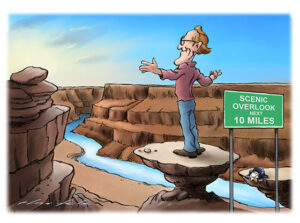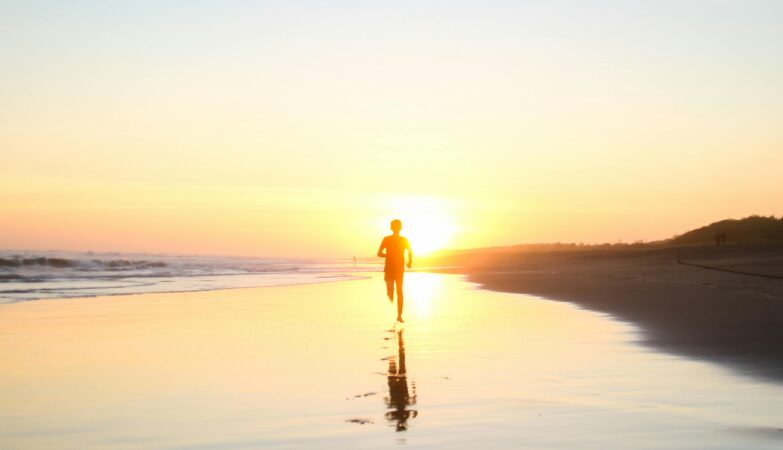Editor’s Take note: This post was composed by Colin just prior to the latest unparalleled flooding in Yellowstone, our nation’s very first countrywide park. As we reflect on the importance of the upcoming July 4th Anniversary – and the idea that the nationwide parks are the Declaration of Independence utilized to the land – the problems and closings that resulted from this disaster make us all recognize the enduring treasures of our national parks additional than at any time.
There have been no countrywide parks inside of the vary of my traveling abilities when I was increasing up. I did not definitely know what a nationwide park was. The text didn’t evoke any variety of image in my experience. I hardly ever visited a person until I was an adult. It took me a extensive time to master to value what a excellent thing the nationwide parks are.
I have to credit history the Ken Burns-Dayton Duncan film “The Nationwide Parks: America’s Finest Idea” for opening my eyes to the whole magnitude of that plan. I was fairly substantially persuaded of the fact of their thesis, that the National Parks actually might be “America’s Best Notion,” soon after the founding of the region and the formulation of democracy by itself.
In an job interview, Duncan claimed, “I will make the argument that the national parks is our most effective idea. And the cause is for the reason that it is in fact an expression of the Declaration of Independence utilized to the landscape, which is that the most lovely, most majestic, and, I would say, sacred areas in our country ought to be set aside not for royalty or the prosperous or the nicely connected, as it had been in all recorded record, but for every person and for all time.”
Today the notion has been picked up all about the globe. The Global Union for Conservation of Nature counts a lot more than 4,000 countrywide parks. And that is very good for the full world. It signifies that a lot of of the most lovely places will be preserved for the profit of all people today. It’s a worthy aspiration toward a higher degree of society than one that just allows exploiters run roughshod more than almost everything.

The film grew out of Dayton Duncan’s deep enthusiasm for the countrywide parks given that his childhood. Duncan has worked with Ken Burns on pretty much every movie, either as a specialist, writer or producer, going again to The Civil War. But it seems crystal clear to me, from viewing interviews with him, that the film about the countrywide parks was a distinctive favourite for him, and an intensely personal vision.
The countrywide parks have been one of the most profound passions of his life. The movie was a possibility for him to set that enthusiasm into a cinematic expression. His really like for the parks is infectious. The movie series received two Emmy awards, but even extra importantly, I assume, its extensive viewership when it came out in 2009 was adopted by a surge of attendance at the National Parks.
I suppose the series affected lots of other individuals the way it did me. I was definitely taken by the plan that the nationwide parks are the principle of democracy expressed in the landscape by itself.
Duncan mentioned that the idea arrived from writer and historian Wallace Stegner, who wrote an post in 1983 called “The Greatest Concept We Ever Experienced: An Overview.” In it he wrote, “National parks are the greatest concept we at any time experienced. Unquestionably American, completely democratic, they mirror us at our ideal alternatively than our worst.”
Stegner himself credits James Bryce, a British Ambassador, with coining the phrase. And there may perhaps be other legitimate promises to currently being the initially to articulate the idea. But, as with so many things, finding the “first” is probably not possible. Beginnings have a tendency to fade into the mist of the previous. But that speaks to the universality of the notion.
In a 1990 post in which Stegner credits Bryce for the phrase, he also acknowledges that “The tracing of ideas is a guessing match. We can’t notify who to start with had an strategy we can only convey to who initially had it influentially….”
The strategy driving the national parks seems to have appear from the inhabitants itself, a spontaneously arising movement to guard the most lovely places from exploitative destruction. That too speaks to it as an expression of democracy. The idea appears to have worked its way up to the governmental companies that could enact rules to codify it.
It emerged out of a rising awareness that people beautiful sites out west would quickly be overrun and most likely desecrated. It is an encouraging example of how people who think passionately in one thing can basically make a change, even in the encounter of powerful forces towards them.
The origin of the countrywide parks themselves is also not effortless to pinpoint. The website of the Nationwide Park Service claims, “Artist George Catlin, during an 1832 trip to the Dakotas, was maybe the initial to recommend a novel remedy to this rapidly-approaching fact.”
Indian civilization, wildlife, and wilderness have been all in hazard, wrote Catlin, except if they could be preserved “by some good defending coverage of government… in a superb park… A nation’s Park, made up of gentleman and beast, in all the wild[ness] and freshness of their nature’s natural beauty!”
Presidents Abraham Lincoln, Ulysses S. Grant and Teddy Roosevelt were being all instrumental in the progress of a nationwide park program. It is a lengthy and elaborate historical past. We are fortunate that the strategy has managed to survive the political procedure and to development as effectively as it has
When I traveled to some of the terrific national parks of the American West, I got the feeling that the plan underlying the parks is shared in typical by the individuals who show up at the park. Certainly, they have not all seen the Ken Burns film. But in some way there appeared to be an unspoken sharing of the beliefs.
It struck me notably when I was in Zion Nationwide Park, but the same was true of all the parks I frequented. Folks appear to share a type of reverence for the put, for the ecosystem.
The identify Zion refers to a hill in the metropolis of Jerusalem, but it is also defined extra generally as “holy place” or “kingdom of heaven.” The moment I skilled Zion, I recognized why it was identified as that. It is an astonishingly attractive location, with colossal mountains and steep cliffs, considerable operating h2o flowing in crystal crystal clear streams. I acquired a powerful feeling amongst the folks visiting that they appreciated that transcendent beauty and honored the area as a sort of holy location – a secular spirituality that produces a widespread floor for persons of different religions to fulfill on.
I was particularly moved by the spirit of camaraderie I felt and observed there amongst individuals who had been naturally from lots of different states and nations and ethnic backgrounds. But the magnificent landscape, and a shared reverence towards it united every person in an unspoken pact.
The way men and women handled others, with kindness and regard, was a revelation. It was as if the reverence for the pure splendor infused our interactions with each individual other. It did truly feel like a holy put. And it felt great.
Could that have existed without the generation of the countrywide parks? I question it. There had to be an official proclamation that set aside this land to defend it from people who would not honor its natural beauty and see it as a sacred area.
Yet another point the film made obvious was that it was often a battle. The protection of people places so that they have survived in fantastic form up to the time when we could love them is a terrific blessing. It’s not one thing I get for granted.
But I am way at the rear of. I have frequented national parks in Africa, Australia, Scotland, Jordan and other sites. And nevertheless there are so numerous in my individual place that I have not noticed. I want to try out to make up for that blank room in my daily life tale.
Your humble reporter,
Colin Treadwell







